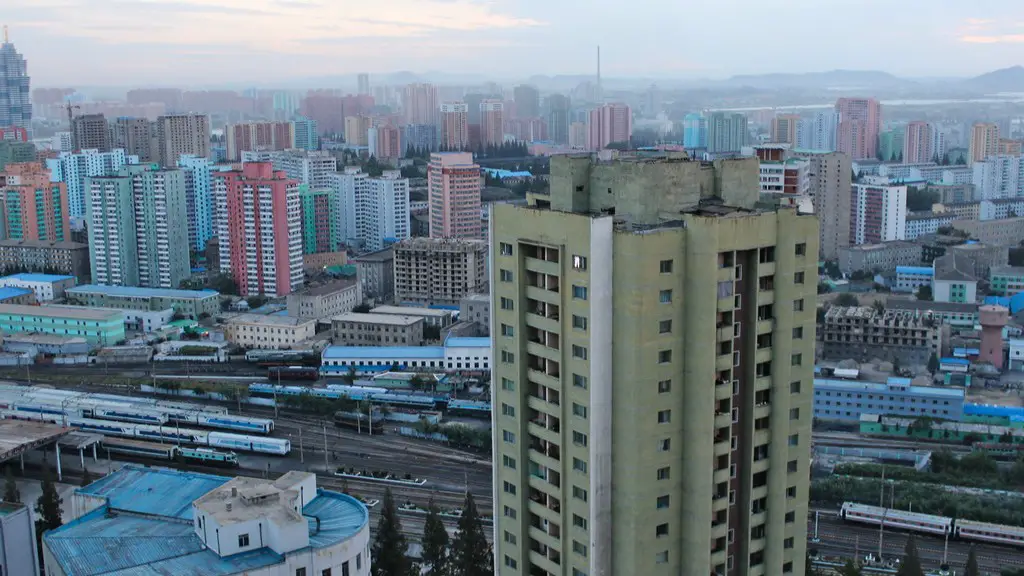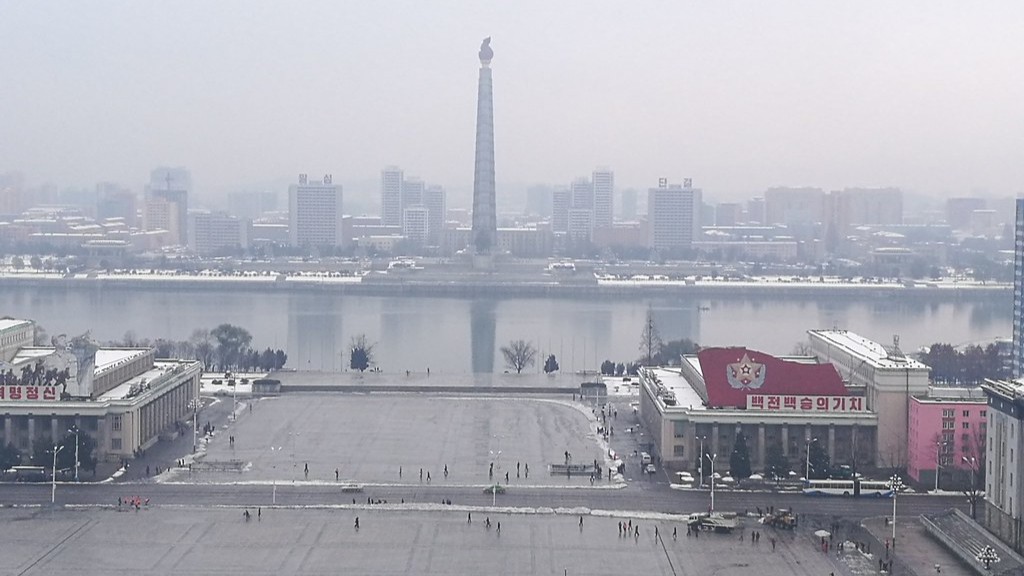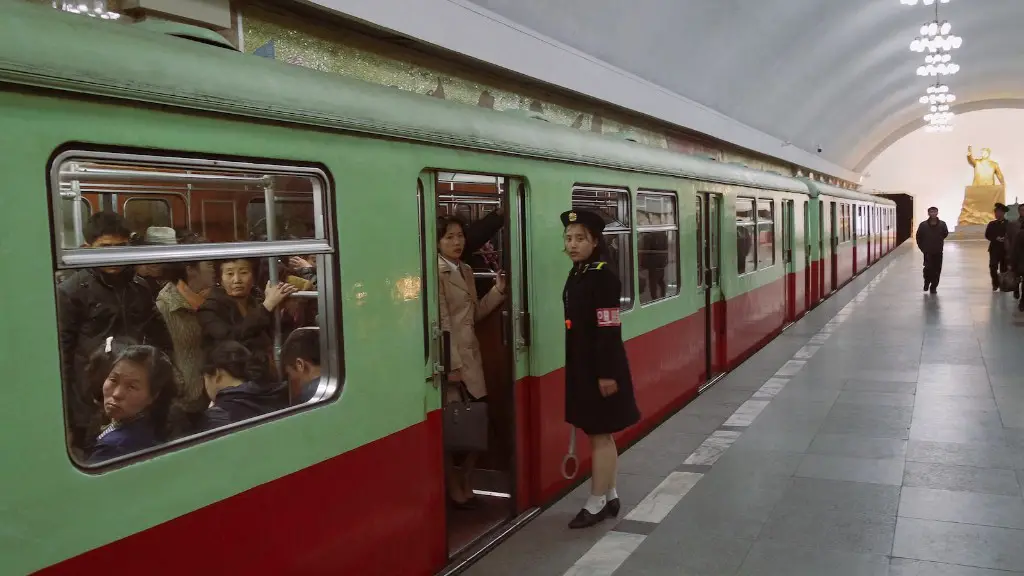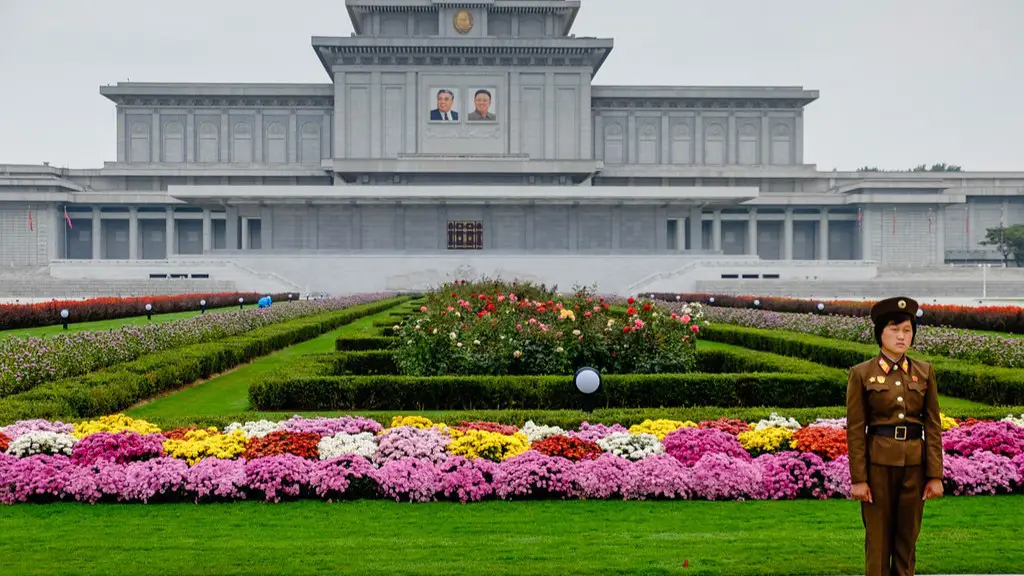Today, the Korean peninsula is divided into two distinct countries: the Democratic People’s Republic of Korea, more commonly known as North Korea, and the Republic of Korea, known as South Korea. From beyond the 38th parallel, their drastically different economic and political systems have made relations between the two countries complex and hostile. But why exactly are North and South Korea divided?
The roots of one of the most entrenched divisions of the post-World War II era stem from a decision made at the end of the war. After Japan was defeated and surrendered, the former colonial ruler of Korea, the Allied forces were left with the task of deciding what to do with the Korean peninsula. In 1945, the Soviet Union and the United States agreed to divide the peninsula in half, with a line drawn across the 38th parallel.
The Soviets installed their own communist government in the North, while the Western-allied United States occupied the southern half and established a democratic government. Soon, the two governments split and proclaimed themselves as separate independent states, with the North formally known as the Democratic People’s Republic of Korea and the South as the Republic of Korea. The Koreas have been divided ever since.
The different political ideologies of both countries have magnified the divide since the 1950s. The US-allied South took on a pro-Western stance and welcomed foreign investment, while the Soviet-backed North maintained a hardline stance against capitalism and adopted the authoritarian rule of ‘juche’, or self-reliance. The North’s hostility escalated as a result of the Cold War, resulting in a tense and aggressive diplomatic relationship between the two countries.
The continuing tension between North and South Korea resulted in the 1950-1953 Korean War, which was followed by an armistice brokered by the United Nations. Since then, North Korea and South Korea have never signed a peace treaty, highlighting the continued territorial animosity between them. In addition, the North has continually conducted military exercises near the 38th parallel, aimed at intimidating South Korea. These exercises have increased in intensity and frequency, leading to severe sanctions being placed on North Korea by the international community.
In spite of the lengthy divide, there have been some glimmers of hope for eventual reunification. In 2000, a summit between North and South Korea saw both countries affirm the importance of ‘peace, exchange and cooperation’. Diplomatic relations have still yet to be restored and there is no clear path for both Korea’s to agree on a political settlement. Yet, it demonstrates that both nations have the potential to put past differences aside and explore ways to reunify the peninsula.
The Koreas’ divide has continued to be one of the most contentious geopolitical issues in the world. Yet it provides a glimpse of how two different political systems can potentially steer a country towards a brighter and peaceful future.
Economics Of North And South Korea
The economic disparity between North and South Korea is significant. North Korea’s economic development lags far behind South Korea, severely weakened by its insistence on maintaining centralised planning and employing a heavy industry-focused economic policy. South Korea by comparison has made rapid strides in economic and technological development.
The South Korean economy has grown rapidly in recent decades, slowly transitioning from an agricultural economy to a dominant service-based industry. Manufacturing remains the largest contributor to its Gross Domestic Product (GDP); South Korea’s leading exports include motor vehicles, computers and electronics, machinery and chemicals. Its strong economy gives South Korea one of the highest per capita gross domestic product in the world.
By contrast, North Korea has endured long periods of international isolation due to its autarkic system. Its economy historically centres around its heavily subsidised public sector and military-industrial complex. Despite this, North Korea’s economy has seen moderate growth in recent years due to joint investments from foreign entities and international sanctions being lifted.
The economies of the two Koreas reflect the stark political differences between them. South Korea’s economic development stands in sharp contrast to North Korea’s economic stagnation, and can be seen as an indicator of the impact authoritarian rule has had on the country’s development.
Cross-Border Relations
Despite being politically divided, North and South Korea remain strongly connected. North Korean citizens regularly travel to the South for business and investment opportunities, while a number of South Korean entities such as corporations, film companies and missionaries maintain active links with their northerly counterparts. There is also a continued sense of solidarity between the two countries, with Korean citizens on both sides of the divide holding heartfelt desires for reunification.
Cross-border engagements between the two Koreas, however, remain limited. As North and South Korea continue to maintain a tenuous diplomatic relationship, direct interactions and exchanges between Koreans in the two Koreas remain limited. Many forms of communication are either heavily restricted or completely barred by the North Korean government.
Despite the difficulties, there continue to be a number of projects that aim to bridge the divide between the two countries. These include cultural exchanges, medical aid and the mutual pursuit of peace. Just last year, the two Koreas undertook a groundbreaking joint project to conduct an archaeological excavations in North Korea.
These small acts of cross-border partnership demonstrate that the two countries continue to co-exist, however difficult that may be, and mutual understanding and compassion remains between Korean people on both sides of the divide.
Military Conflict And Consequences
The Korean Peninsula has seen numerous military conflicts between North and South Korea since the 1950s. In addition, North Korea’s persistent refusal to end its nuclear weapons programme has placed the country under international sanctions, severely damaging its already weathered economy. From the alleged 1987 mid-air bombing of a South Korean airliner to the current sanctions placed on North Korea by the United Nations, diplomatic tensions between the two Koreas continue to remain high.
The potential of another United Nations-imposed war is ever present. The South Korean army stands at the ready to retaliate against even the smallest of North Korean provocations, while North Korea regularly test-fires missiles as a means of flexing its strength. North Korea’s possession of nuclear weaponry has amplified international concern, and its continued pursuit of such weapons presents a major threat to regional stability.
The conflict between the two Koreas has had long-lasting consequences, severely damaging both economies and hampering attempts at reunification. It has also caused untold human suffering, with countless innocent Koreans living on both sides of the divide having been affected by the conflict.
Ongoing Situation
The situation between North and South Korea today is uncertain and volatile. Despite diplomatic moves from both countries, the conflict has yet to be resolved and tensions between both sides remain high. This is largely due to the continued pursuit of nuclear weapons by North Korea and its unpredictable nature, making it difficult for countries such as the United States to trust it. This has led to a series of punitive economic sanctions being applied to the country, hindering its economy and damaging its standing in the international community.
The years-long stalemate between North and South Korea has had a traumatic effect on both nations, adversely affecting the lives of millions of individuals. For example, there are still thousands of separated families, who were split apart during the Korean War, and have yet to be reunited to this day. Unification, however, is still on the table and both countries have expressed desires to restore ties and bring an end to the conflict.
Nevertheless, the process will be difficult and fraught with challenges. The need for compromise between both sides is essential if any unification is to happen, but the mistrust between North and South Korea along with North Korea’s pursuit of nuclear weaponry means that the division between them could potentially continue for years to come.
International Relations
The division between North and South Korea has had a profound effect on the international community, with the majority of countries being acutely aware of the fragile political situation between both Koreas. As such, many countries have expressed a desire to support a peaceful resolution, with North and South Korea as well as thousands of concerned individuals involved in the search for unification.
The United Nations has expressed its commitment to peace and stability in the region, making it clear that it is against the use of nuclear weapons and any form of aggression from both sides. It has put in place a number of international treaties, such as the ‘Korean War Armistice Agreement’, in an effort to regulate the conflict and encourage both sides to show restraint.
The international community has also been involved in attempts to bring about reunification, with various countries including the United States, Japan, China and Russia engaging with both North and South Korea. These activities have included diplomatic talks and cultural exchanges, with the hope that they can help to bridge the divide and bring an end to the conflict.
Conclusion
The Koreas’ divide has become one of the most entrenched divisions of the post-World War II era. North and South Korea’s complex relationship has been largely due to their drastically different economic and political systems, which has played a major role in the Korean peninsula being divided in two. Complicating matters is North Korea’s continued pursuit of nuclear weapons, which have exacerbated the already tense diplomatic relationship between both countries.
In spite of the political differences between North and South Korea, there remains a strong sense of solidarity and a desire for unification. Various cross-border engagements, diplomatic talks and international initiatives have been set up in an effort to achieve this, yet the situation between both Koreas remains volatile. It is clear that a peaceful resolution will be difficult to achieve and will require compromise from both sides, if reunification is to become a reality.





